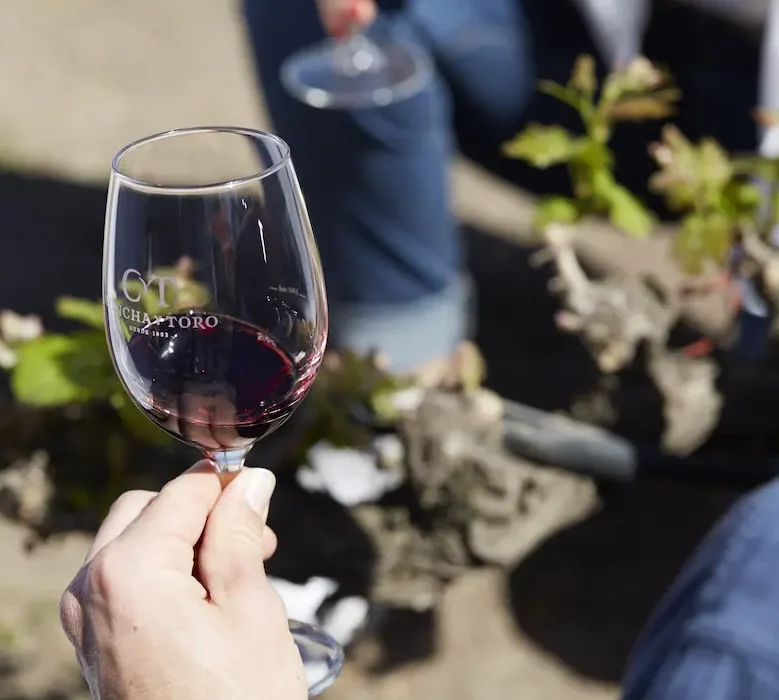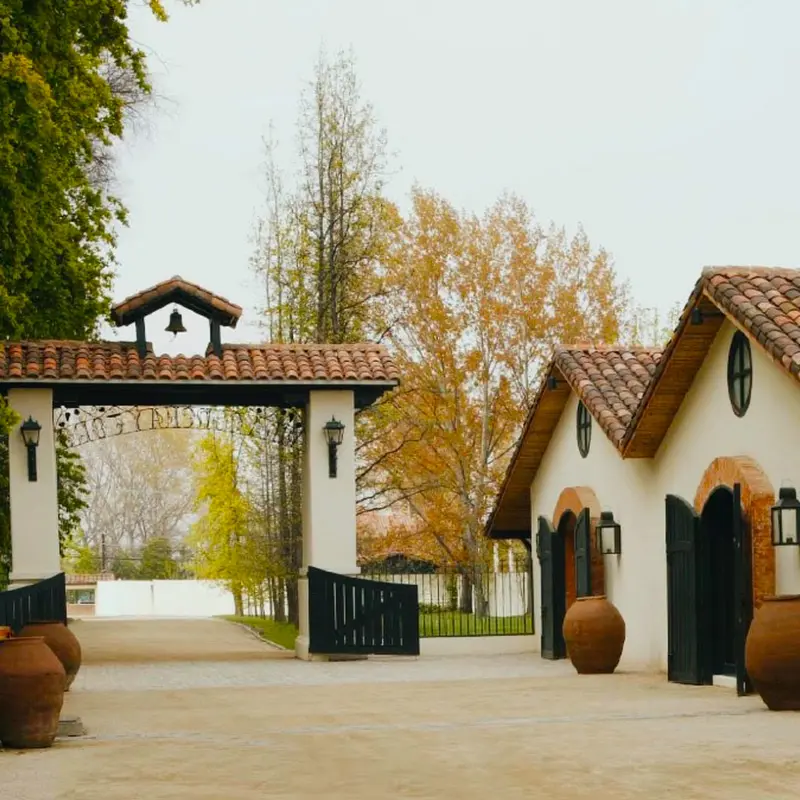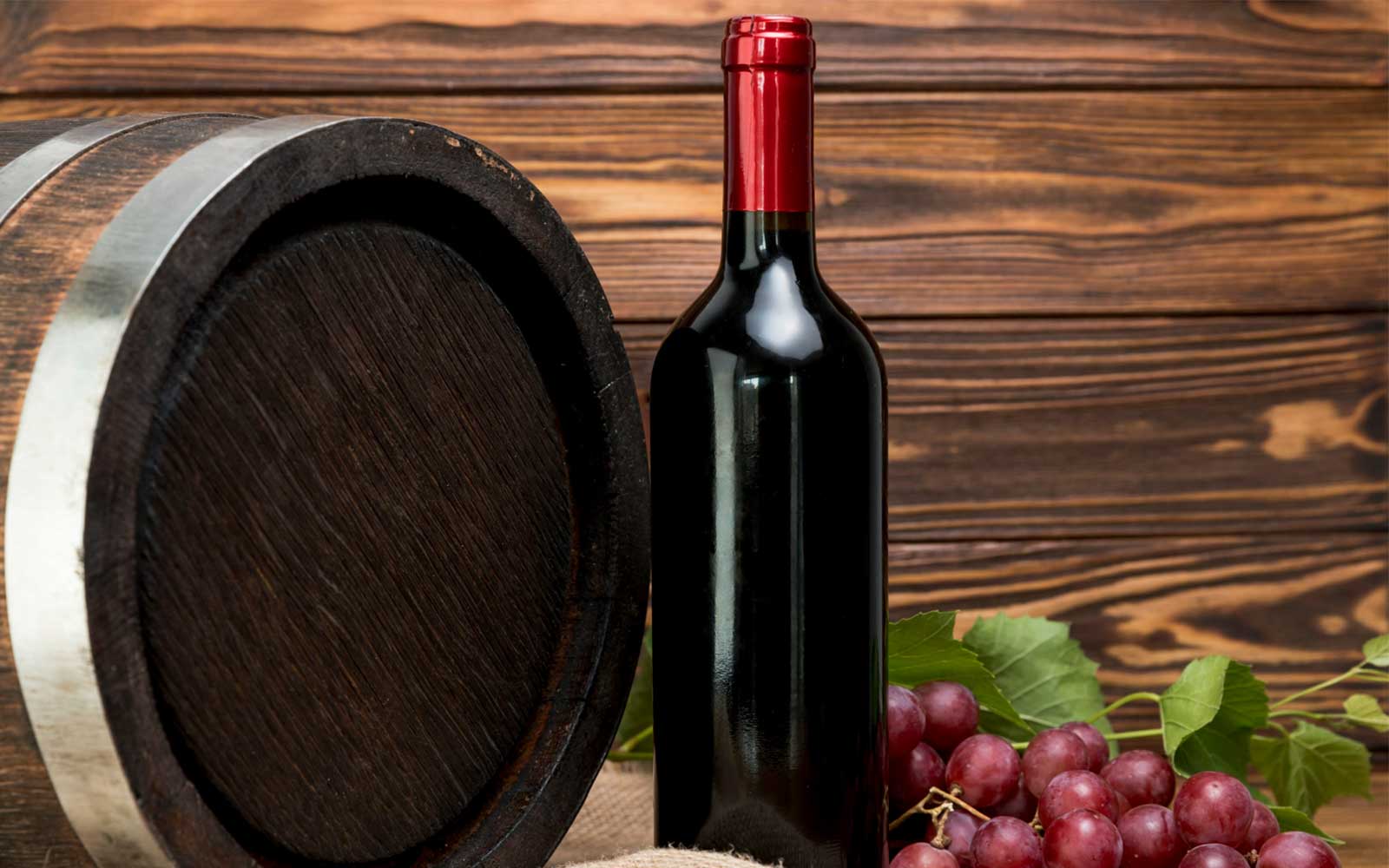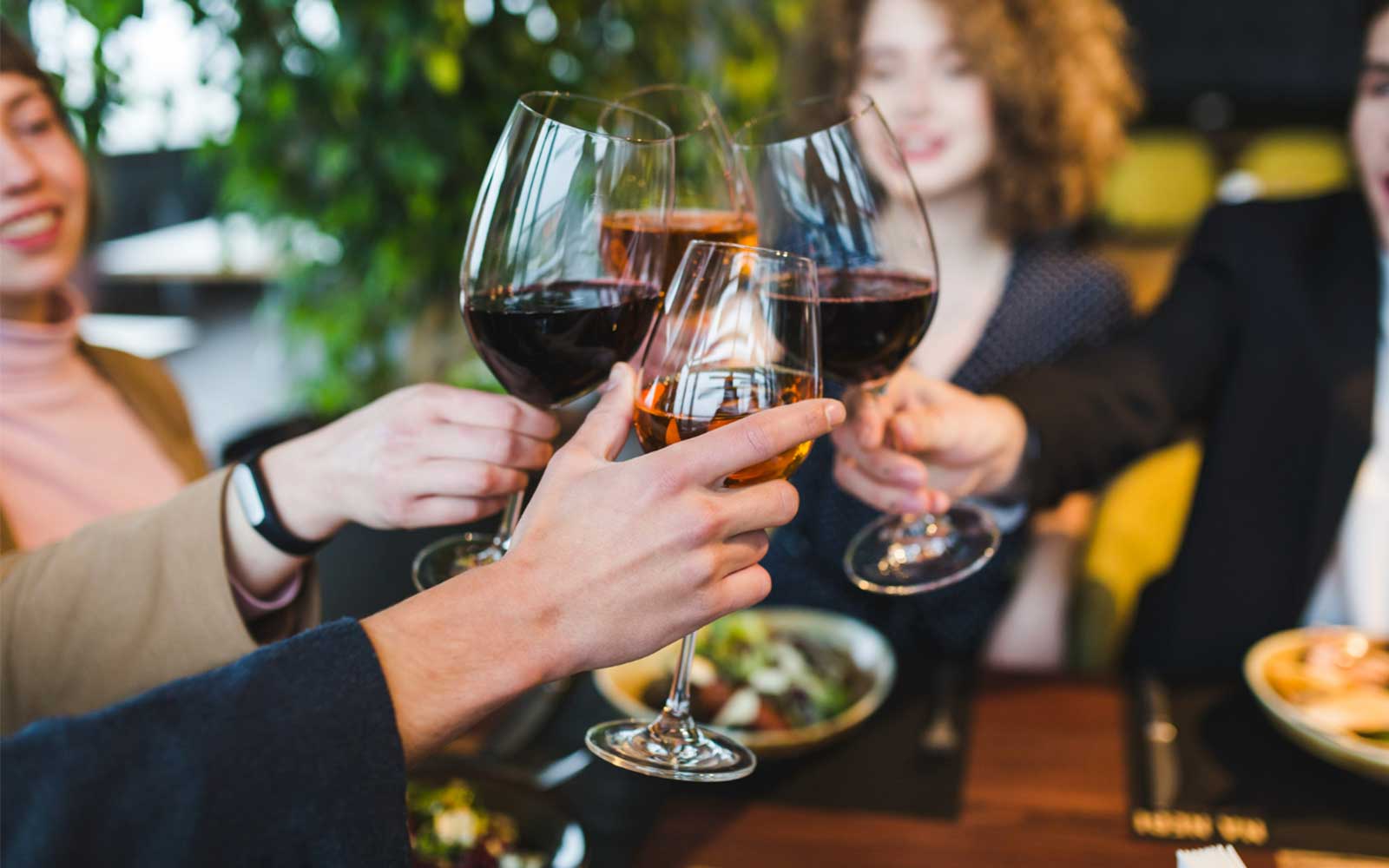Wine tourism, a unique experience that blends the passion for wine with the beauty of wine regions, has become a fascinating travel trend around the world. In this article, we will explore in detail what wine tourism is and how Chile has emerged as one of the leading destinations in this form of travel and tourism.
What is wine tourism?
Wine tourism, also known as enotourism, focuses on highlighting the richness of a specific winegrowing region. Additionally, this type of tourism intertwines with other forms of travel, such as culinary and cultural tourism.
This type of tourism implies traveling to a specific winegrowing region to immerse yourself in its essence. This includes visiting wineries, vineyards, museums, restaurants, and other wine- related activities.
While wine takes center stage, it also provides us with the opportunity to explore the history, culture, and even topography of the region. These aspects significantly influence the wine production and our understanding of this captivating world.
Characteristics of wine tourism
These are some of the main characteristics of wine tourism:
- It is focused on wine, its processes, and qualities.
- It is a variant of culinary and cultural tourism.
- It is practiced primarily in rural settings.
- It is a solid and attractive alternative for tourism.
- It is designed for wine enthusiasts and those newly exploring the world of wine.
Prominent Wine Events and Festivals around the World
The world of wine tourism is full of exciting events and festivals that offer you the opportunity to immerse yourself in wine culture. From harvest celebrations that allow you to participate in grape picking to exclusive tastings at prestigious wineries, there is a wide variety of experiences to enjoy. Some of these events include:
- Beaujolais Nouveau Day: Annual celebration of Beaujolais Nouveau wine, held the third Thursday in November in cities around the world.
- Napa Valley Wine Harvest Festival, California, U. S.A.: Celebrated in September, this festival is one of the most well-known wine harvest events. It includes wine tastings, fancy sit-down dinners, live music, and activities related to the wine harvest.
- Bordeaux Fête le Vin Wine Festival, France: Bi-annual festival celebrated since 1998. It offers the opportunity to discover the Bordeaux and Nouvelle-Aquitaine wines.
- Haro Battle of Wine, La Rioja, Spain: This annual event is held in Haro. It combines religious and pagan traditions with a battle of wine where participants throw wine on each other.
Most Emblematic Wine Tourism Valleys
The Charm of Napa Valley, California
Located in northern California, it is one of the most iconic wine tourism destinations in the world. With its soft hills dotted with vineyards and a Mediterranean climate ideal for growing grapes, Napa Valley is home to some of the most prestigious wineries in the United States.
The Magnificence of La Rioja, Spain
La Rioja, Spain, is synonymous with winegrowing tradition and winemaking excellence. Its landscapes, characterized by rolling hills and vineyard fields, are a sight to see. La Rioja is known for its red wines and historical wineries that have been producing wine for centuries.
The Picturesque Landscape of Barossa Valley, Australia
Situated in South Australia, Barossa Valley is a destination with centuries-old vineyards, renowned wineries, and a diversity of grape varieties. Wine tastings are a central feature of the experience, and visitors can explore both historic and modern wineries to sample exceptional wines.
The Splendor of the Maipo Valley, Chile
Located in the Metropolitan Region of Chile, it is a wine region that has gained international renown. With its mountainous landscapes, this valley is famous for producing high-quality wines, particularly red wines such as Cabernet Sauvignon. It offers a picturesque setting with historic and modern wineries, terraced vineyards, and a rich winegrowing tradition. Visitors can enjoy wine tastings, vineyard tours, and other similar activities with the Andes Mountains in the background.
Wine Tourism: A Driver of Local Economies
Wine tourism is not only a pleasure for wine lovers, but also a significant driver of local economies in winegrowing regions around the world. Two key aspects that make wine tourism a fundamental economic driver are the generation of jobs and the creation of business opportunities.
Creation of Jobs and Business Opportunities
Wine tourism creates jobs in multiple sectors. From wineries and vineyards to restaurants, hotels, tour guides, transportation, and souvenir shops, the industry creates a variety of job positions. This not only benefits the local community, but also contributes to the region’s economic growth.
Promotion of Cultural Heritage
Wine tourism is a powerful tool for promoting and preserving the cultural heritage of wine regions. Historic wineries, wine museums, and local festivals related to grape harvesting and winemaking play a significant role in preserving the history and culture of a region.
Visitors have the opportunity to immerse themselves in the winemaking tradition, explore local architecture, indulge in regional cuisine, and learn about the cultural heritage of the community. It is not just about tasting the wines, but also experimenting the richness and authenticity of the local culture and history.
Wine Tourism in Chile
Wine tourism in Chile has witnessed significant growth in recent decades. Chile has positioned itself as a leading destination for wine lovers, thanks to its growing wine industry. The infrastructure has improved significantly, with wineries offering tasting rooms, restaurants, and wine-related activities.
Chile has also promoted its wine industry internationally, attracting visitors from all over the world. Sustainability has also played an important role, with many wineries adopting environmentally-friendly practices. In summary, wine tourism in Chile has evolved into a comprehensive and diversified experience for wine enthusiasts.

Unforgettable Wine Tourism Experiences
During their visit, tourists have the opportunity to explore different wine regions, visit wineries and vineyards, partake in tastings, and enjoy wonderful landscapes.
Wine tourism offers a wide variety of activities related to the world of wine and viticulture. These activities may vary by wine region, but some of the most common include:
- Winery and Vineyard Visits: You can explore winery and vineyard facilities, where you will learn about the winemaking process, from grape harvesting to fermentation and bottling.
- Wine Tastings: A core part of wine tourism, where you can try different wines, learn to appreciate their nuances, and discover your personal preferences.
- Vineyard Tours: Strolls through the vineyards to learn firsthand about the vines and the cultivation process.
- Special Events and Festivals: Some regions organize events related to wine, such as wine harvest festivals, wine fairs, and concerts.
- Overnight Stays: Some wineries offer lodging, allowing you to enjoy a more immersive experience.
- Wine Museums: Some regions have museums dedicated to the history and culture of wine.
- Wine Tours: Trips organized to take you to multiple wineries and vineyards within a wine region.
These activities allow wine lovers and travelers to explore the local wine culture, learn about the country’s history, and, of course, taste a wide variety of exceptional wines. At Concha y Toro we have different Tours, click to see all the options and select your favorite.
Main Wine Tourism Regions in Chile
Chile has a number of wine regions ideal for wine tourism. Some of the main wine tourism regions in Chile that are home to Concha y Toro wineries are:
- Casablanca Valley: With its cool climate and proximity to the Pacific Ocean, this valley is known for its white wines, especially Sauvignon Blanc and Chardonnay. It is a very popular wine tourism region not far from Santiago.
- Colchagua Valley: Famous for its red wines, such as Carmenere, this valley offers a wine tourism experience rich in Chilean culture and tradition. Its vineyards and wineries are among the country’s most prestigious.
- Maipo Valley: Very close to Santiago, this valley is known for producing high-quality red wines, especially Cabernet Sauvignon. It offers numerous historic wineries that are popular destinations for wine tourism.
- Maule Valley: This is the largest wine region in Chile in terms of vineyards. It is versatile in producing different grape varieties, making it an ideal choice for those who want to explore a wide range of Chilean wines.
- Limarí Valley: a wine region located in the Coquimbo Region of northern Chile. It has been gaining recognition in recent years due to its climate particularly suitable for the production of high-quality wines, especially fresh white and red wines.
- Cachapoal Valley: a wine region located in the Libertador General Bernardo O’Higgins Region of Chile. It is known for its production of high-quality red wines, particularly Cabernet Sauvignon, which thrives in its soils and climate.
Each of the above regions has its own winegrowing personality and unique beauty. Whichever region you choose to visit, an enriching experience awaits you in the world of Chilean wine.

Tips for Planning Your Next Wine Tourism Adventure
Planning a wine tourism adventure is exciting and can be an enriching experience. experience. To get the most out of your trip, here are some of our most helpful tips:
What is the best time of the year for wine tourism in Chile?
The best time of the year for wine tourism in Chile depends on your personal preferences and what you are looking to do. Chile is a wine tourism destination year-round, but there are some considerations you are going to want to take into account:
- Wine Harvest Season (March to April): If you want to witness the moment when the grapes are ready for harvest and experience the atmosphere during the wine harvest, then March and April are the ideal months for visiting. During this time of the year, many wineries organize special activities to celebrate the harvest.
- Fall Season (March to May): Fall is a beautiful season in Chile, when the vineyards take on warm, autumn colors. The weather is nice, and temperatures are moderate, making it an ideal time to tour the wineries and taste wines without the summer heat.
- Spring Season (September to November): Spring is another good season for visiting the Chilean wineries. The vineyards are full of life and flowers, and the weather is pleasantly mild. It is a good time to tour the vineyards and enjoy the natural setting.
- Summer Season (December – February): If you prefer warm weather and outdoor activities, summer is an excellent choice. You can enjoy outdoor wine tastings, picnics in the vineyards, and wine-related events. However, keep in mind that temperatures can be quite high in some wine regions, such as the Colchagua Valley.
During the winter season, tourists often engage in snow-related recreational activities or other seasonal activities. However, it’s also a perfect time for vineyard tours. Ultimately, the best time of the year for wine tourism in Chile depends on your weather preferences and the experience you are looking for. Any time of the year can be a good choice, as Chile offers beauty and wine-related activities year-round.
Tips for Choosing Your Ideal Wine Tourism Destination
- Research wine regions: Research the different wine regions around the world. Each one offers a unique experience, and you will have to decide which one is right for you.
- Climate and season: The time of year you are planning to travel may influence your decision. Some seasons are ideal for the wine harvest, while others are better for enjoying outdoor wine tastings. Research the weather at your destination and choose which season best meets your preferences.
- Other experiences: In addition to the wineries, consider what other experiences you want. Some wine regions offer a rich culinary culture, outdoor activities, festivals, and cultural events. Make sure your destination offers the complementary activities you wish to enjoy.
- Budget: Determine the budget for your trip. Some regions can be more expensive than others, not only in terms of accommodation and food but also regarding the cost of wine tastings and additional activities. Make sure your destination matches your budget.
- Crowdsourcing: Read online reviews and ask your friends and family members who have visited wine regions. Their experiences and recommendations may help you make a more informed decision.
- Flexibility: Keep an open mind and remain flexible in your selection. Sometimes, unexpected surprises and discoveries in lesser-known wine regions can lead to memorable experiences.
Concha y Toro Wine Route
Viña Concha y Toro is one of Chile’s most iconic wineries and offers a unique wine tourism experience in the Maipo Valley, specifically Pirque, located in the Metropolitan Region of Santiago. Visitors can enjoy various wine-related activities and explore the charms of this historic winery. Here are some of the routes and tours we offer:
- Viña Concha y Toro – Pirque Tours & Tastings
- Estate Home Luxury Tours & Tastings
- Culinary Experiences
Viña Concha y Toro offers visitors a complete immersion into the world of Chilean wine, combining history, winemaking tradition, and the beauty of its vineyards. This wine route allows you to appreciate the excellence of the winery and its wines in a spectacular setting.
Do you need to be a wine expert to enjoy wine tourism?
No, you don’t need to be a wine expert to enjoy this wonderful world of wine. In fact, wine tourism is designed to be accessible and enjoyable for people of all levels of wine knowledge. The most important thing is to be open to learning and enjoying the wine culture in a pleasant and relaxed environment.



